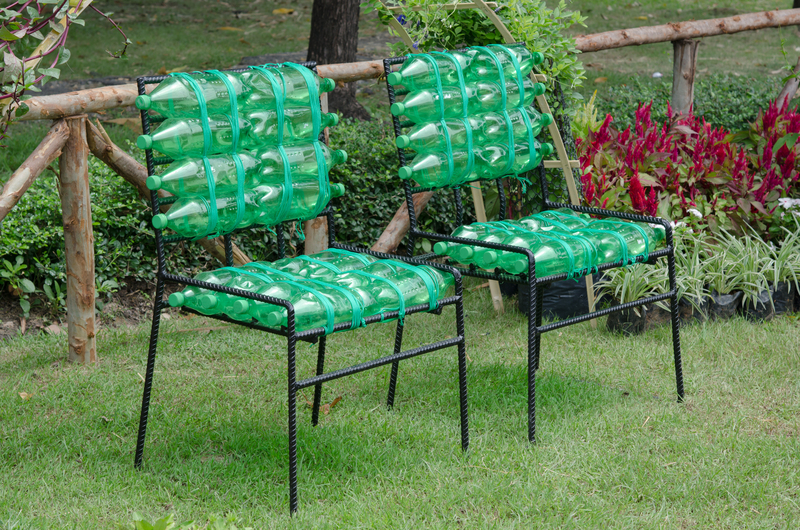Choosing the Right Mini Skip: Simplified Waste Collection
Waste management is a crucial aspect of maintaining an organised and hygienic environment, whether it's for your home, office, or building site. Among various waste disposal solutions, mini skips have emerged as an accessible and efficient method for handling smaller loads of waste. If you're looking for ways to dispose of rubbish quickly and easily, choosing the right mini skip is essential for simplified waste collection. This comprehensive guide will help you understand everything you need to know about selecting the ideal mini skip for your needs.

What is a Mini Skip?
A mini skip is a compact, robust waste container specifically designed for collecting and transporting smaller volumes of waste. Typically available in sizes ranging from 2 to 4 cubic yards, mini skips are suitable for domestic jobs, garden clearances, minor renovations, or small construction projects. Their smaller footprint makes them particularly advantageous for properties with limited driveway or kerbside space.
- Size: Generally 2-4 cubic yards
- Placement: Fits easily in driveways or tight spaces
- Best for: Small household, garden, or DIY waste
Why Opt for a Mini Skip?
Mini skips offer a cost-effective and practical solution for waste disposal. Their convenience, affordability, and versatility make them a go-to option for many households and businesses. Here are some key benefits:
- Space saving - Easily fits into small spaces unlike standard skips
- Cost-effective - Cheaper than hiring a larger skip if you have minimal waste
- Environmentally friendly - Encourages proper waste sorting for recycling
- Efficient - Offers a quick and straightforward waste collection process
- Accessible - Simple delivery and collection options
How to Choose the Right Mini Skip: Key Considerations
While mini skips are incredibly convenient, it's important to consider several factors before making your choice. Proper planning will ensure you get the most suitable skip size and service for your project. Here's what you need to evaluate:
1. Evaluate the Type and Amount of Waste
Establishing the sort of waste you'll be dealing with is crucial. Different skips may have restrictions based on waste types:
- General household waste - Furniture, old toys, and clutter
- Green waste - Garden clippings, leaves, and soil
- Construction waste - Bricks, rubble, plasterboard
- Prohibited items - Asbestos, batteries, tyres, electricals (check with your provider for specifics)
Always check with your local skip hire company for a detailed list of what can and cannot be placed in the skip.
2. Estimate the Volume of Waste
- 2-yard mini skip: Suitable for around 20-25 bin bags
- 3-yard mini skip: Holds approximately 30-35 bin bags
- 4-yard mini skip: Accommodates about 40-45 bin bags
If you're dealing with bulky or awkwardly shaped items, consider sizing up to avoid overfilling, which can incur extra charges.
3. Assess Space for Placement
An often-overlooked aspect of mini skip hire is ensuring you have adequate space for delivery and collection. Consider the following:
- Driveway Access: Is your driveway or kerb accessible for a skip lorry?
- Permit Requirements: If placing the skip on a public road, you may need a permit from your local council.
- Clearance: Ensure there are no obstructions like overhanging branches, parked cars, or low cables.
4. Choose a Reliable Skip Hire Company
Not all skip hire companies offer the same level of service or pricing. Do your research:
- Compare quotes from reputable companies in your area
- Check reviews and ratings on platforms like Google and Trustpilot
- Confirm included services (e.g., permit handling, wait-and-load options)
5. Understand the Hire Duration
Most mini skip hires last from several days up to two weeks. Ensure your schedule aligns with your waste disposal needs and the company's collection times to avoid additional charges.
Comparing Mini Skip Sizes: Find Your Perfect Match
When considering your options, choosing the right mini skip essentially comes down to balancing your waste volume with the available space and budget. Here's a quick comparison to help you decide:
| Skip Size | Capacity (Cubic Yards) | Bin Bags | Best For |
|---|---|---|---|
| 2-yard Mini Skip | 2 | 20-25 | Light home clear-outs, garden tidying |
| 3-yard Mini Skip | 3 | 30-35 | Bathroom/kitchen renovations, DIY projects |
| 4-yard Mini Skip | 4 | 40-45 | Spring cleans, bulkier household waste |
What Can You Put in a Mini Skip?
Understanding what you can and cannot place in your mini skip prevents additional fees and facilitates responsible disposal:
Acceptable Waste:- Non-electrical household items
- Garden waste
- Soil, rubble, and small construction debris (check with provider)
- Furniture, wood, and plastics
- Paper, cardboard, and metals
- Asbestos and hazardous materials
- Electrical appliances and batteries
- Tyres and gas canisters
- Liquids, paints, and solvents
If you're unsure if a specific item is allowed, always contact your skip hire provider for guidance.
Eco-Friendly Waste Disposal Tips
When using a mini skip, it's vital to consider the environmental impact of waste disposal. Here are some green tips for simplifying waste collection while protecting the planet:
- Separate recyclables before throwing items into the skip
- Donate usable items to charities, rather than sending them to landfill
- Compost garden waste if possible
- Avoid overfilling the skip to prevent spillage and additional haulage needs
- Choose a provider that recycles or responsibly sorts landfill and recycling
Cost Factors When Hiring a Mini Skip
Understanding the factors that influence the cost of mini skip hire can help you budget your project efficiently. The most common considerations include:
- Skip size: Larger skips cost more, so match the size to your waste needs
- Hire duration: Extended hire periods may incur extra charges
- Permit fees: Necessary if the skip will be placed on public property
- Location: Costs vary based on city or region
- Type of waste: Hazardous or specialist waste may require premium disposal rates
Maximising Mini Skip Efficiency: Best Practices
Take these simple steps to get the most from your mini skip hire:
- Break down bulky items to maximise space
- Layer rubbish efficiently to avoid air gaps
- Keep the skip level and avoid stacking waste above the rim
- Organise waste by grouping recyclables and hazardous items separately
- Book early during peak home improvement periods to guarantee availability
How to Arrange Mini Skip Hire Quickly
Organising a mini skip for your next project is straightforward with these basic steps:
- Research and compare mini skip hire providers in your area
- Decide on size, placement, and duration in advance
- Book your skip online or via phone, specifying waste type and dates
- If required, apply for a council permit or let the provider arrange it
- Fill the skip responsibly and ensure all rules are followed
- Contact the company for collection once full or at the end of your hire period
Common Mistakes to Avoid When Hiring a Mini Skip
- Underestimating waste volume - Order a size up if in doubt
- Ignoring prohibited items - Could result in fines or refusal of collection
- Poor skip placement - Blocks access, inconveniences neighbours, or requires expensive permits
- Overfilling the skip - Presents environmental, health, and legal issues
- Neglecting eco-friendly options - Contributes to landfill waste unnecessarily

FAQs About Mini Skip Waste Collection
How long can I keep a mini skip?
Mini skip hire periods generally range from a few days up to two weeks, depending on the provider. If you need the skip for longer, confirm whether extensions are available and be aware they may attract extra charges.
Do I need permission to place a mini skip on the road?
If you do not have space on private property, a council permit is required to place a skip on a public road. Many skip hire companies can arrange this on your behalf for an additional fee.
What happens to the rubbish after collection?
Most reputable mini skip companies sort, recycle, and transfer waste to licensed facilities. Choose a provider with environmentally responsible practices to minimise your carbon footprint.
Can I change skip size after booking?
If you realise that your waste volume is more or less than expected, contact your provider as soon as possible. In many cases, skipping up or down in size can be accommodated, but extra fees may apply.
Conclusion: Mini Skips Make Waste Collection Simple
- Mini skips offer a simplified, cost-effective, and eco-friendly solution for small-scale waste collection.
- Choosing the right mini skip for your project ensures efficient and hassle-free disposal of unwanted rubbish.
- By considering waste type, volume, location, and local regulations, you can avoid pitfalls and maximise value.
Whether you are decluttering your home, upgrading your garden, or undertaking minor renovations, mini skip hire is the modern way to tackle waste quickly, easily, and responsibly. Taking the time to choose wisely guarantees a smooth and environmentally sound waste management experience.
Ready to book your mini skip? Research local skip hire providers, compare your options, and simplify your next project with efficient and affordable mini skip waste collection today!